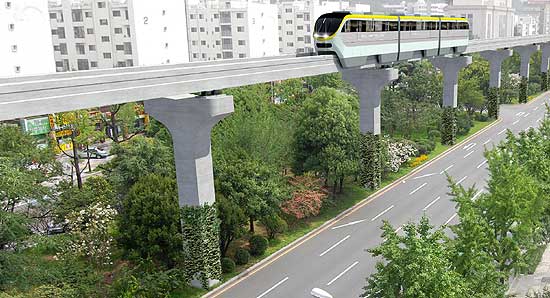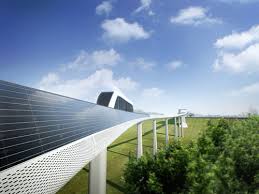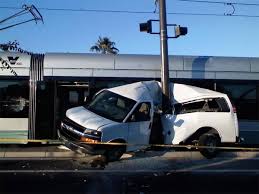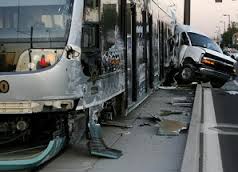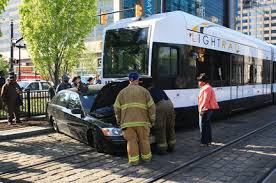
THE ENVIRONMENT
The Environment
Any infrastructure project needs to have careful consideration given to its impact on the environment. All proposals for a Witney to Oxford transport link need to be assessed against a number of environmental issues (not only when operational but also during the construction phase). In our opinion, monorail has advantages over alternative options in this area.
Reducing road traffic and vehicle emissions
This is, of course, one important aim when providing a new public transport system However, during the construction phase, congestion can often be increased as the surrounding roads are affected during works. In the case of tram or light rail; track-bed preparation, track-laying, providing road crossings etc. would severely affect the normal flow of traffic. The construction methods used for monorail are far more likely to ensure that traffic flows are maintained whilst the guideway is assembled. Pre-stressed concrete (or steel) sections are manufactured off-site and quickly secured in position on pre-prepared foundations and supports. The speed at which the guideway can be placed in position ensures that its construction affects the surrounding areas for a relatively short period.
Visual impact
The visual impact can be minimised in a number of ways:
- Guideway can be at low level (‘at grade’) at sensitive points along the route if necessary.
- Tree planting beneath the guideway or the use of climbing plants against supports (as used in Daegu) can help to lessen the visual impact. Where trees exist, all efforts should be made to retain as many as possible.
- Use of coloured concrete for pre-stressed sections can help the structure to merge with the surroundings.
- Sensitive design of stations and platforms.
Landscaping helps to disguise the supports on the Daegu monorail
Small ‘footprint’
The small or ‘compact’ monorail systems available use guideway with a width of only 4.5m (dual track) and reduced support size. The result is that even less space is taken up than conventional monorail and increases the advantage in this regard over light rail, tram etc. The small footprint of the supports also means that, where the guideway is elevated, land beneath can, generally, retain its existing use. Pedestrian pathways and cycle tracks can be retained and if the guideway passed over arable or grazed farmland its use could remain largely unaffected.
Noise levels
Monorail noise levels are considerably less than alternative rail options mainly due to light vehicle weight and the use of tyres on the drive and guidance wheels. Typically the measured noise level of an operating monorail vehicle is around 75dBA compared to around 90bBA for light rail systems.
Low energy and reduced carbon emissions
Monorail compares well to other forms of public transit. A well-designed system can contribute to a low carbon footprint in a number of ways:
- Lightweight vehicles use less energy - monorail train cars have no requirement for the structural rigidity required to withstand collisions with other vehicles sharing the same space
- Regenerative braking - a number of manufacturers employ this method of harnessing the energy used whilst braking to supplement the energy supply.
- Use of solar energy - solar panels can be designed into the roof of the vehicle carriage and station or platform. There is also an opportunity to utilise solar panels along elevated sections of the guideway to further generate energy. The WestOx proposal would have a south-facing aspect to the gudeway for approximately 11km which would be ideally suited to solar energy generation.
The design for Intamin’s Bologna monorail incorporates Solar PV panels along the guideway.
Safety
Monorail transportation has an impeccable safety record with no fatalities to date. There are two main reasons for this:
- The straddle-beam design ensures that it is virtually impossible for a monorail vehicle to de-rail.
- Monorails are ‘grade-separated’; therefore do not come into contact with other vehicles or pedestrians. There have been numerous collisions between tram/light rail carriages and motor cars. It is inevitable that accidents will occur when space is shared between different modes of transport (see below).
